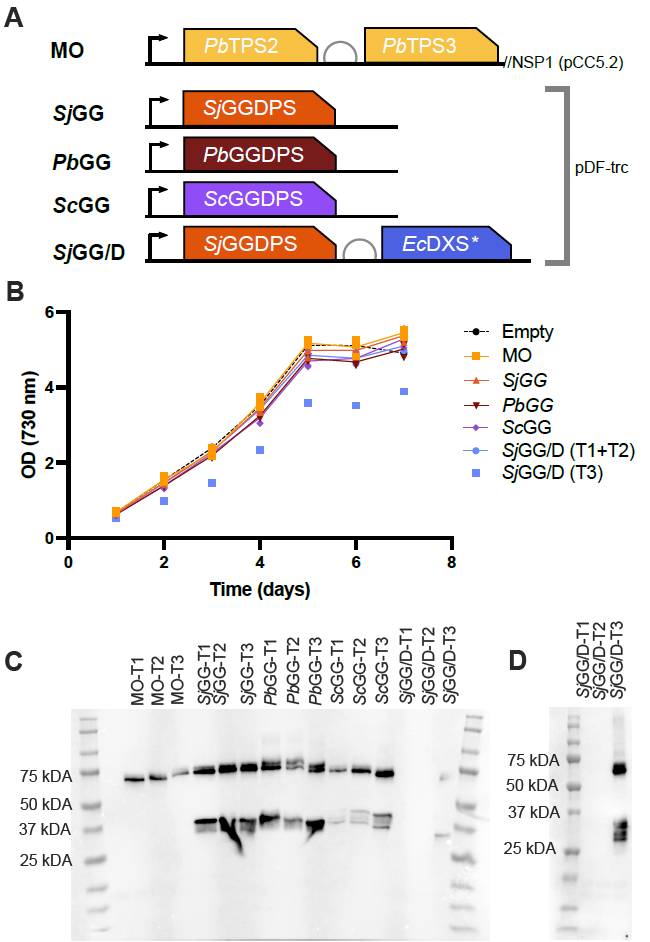Found 1 results
Open Access
Article
22 March 2024Modulation of the MEP Pathway for Overproduction of 13-R-manoyl Oxide in Cyanobacteria
The cyanobacterium Synechocystis sp. PCC 6803 has gained scientific interest for its potential to use solar energy and atmospheric CO2 for the production of high-value chemicals like pharmaceuticals, flavors, and fragrances. Forskolin is a diterpenoid found in the root cork of the plant Plectranthus barbatus and its biosynthetic pathway is initiated by two terpene synthases that convert geranylgeranyl diphosphate (GGDP) into the precursor 13-R-manoyl oxide (13-R-MO). Using the cyanobacterium Synechocystis sp. PCC 6803 as host, we expressed the two terpene synthases resulting in the synthesis of 0.83 mg/L 13-R-MO. Three different geranylgeranyl diphosphate synthases (GGDPSs) were selected for screening; a prokaryotic (Synechococcus sp. JA-3-3Ab (Sj)), a yeast (Saccharomyces cerevisiae (Sc)), and a plant (P. barbatus (Pb)) derived GGDPS. Strains containing the prokaryotic Sj- or the yeast ScGGDPS consistently yielded more 13-R-MO than the base strain. By overexpression of 1-Deoxy-D-xylulose-5-phosphate synthase (DXS) positioned at the entry of the 2-C-methyl-d-erythritol 4-phosphate pathway (MEP) together with the prokaryotic SjGGDPS, the 13-R-MO titer was increased 11-fold to reach 9.7 mg/L by boosting the synthesis of GGDP, the direct substrate for the diterpenoid synthases. We further show that application of a n-dodecane overlay to remove 13-R-MO from the culture medium provided a 2–3 fold increase of the 13-R-MO in a separate cultivation system.
